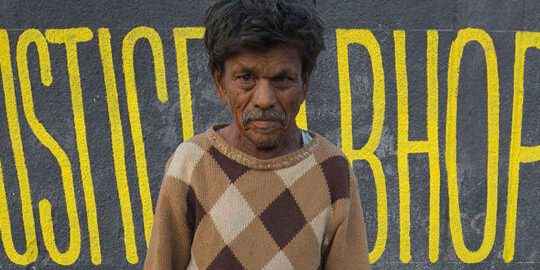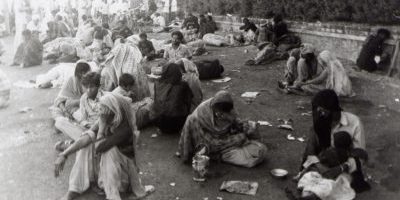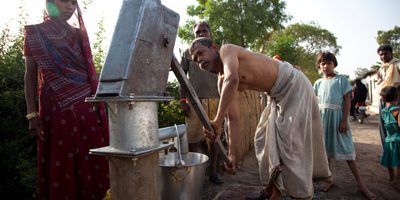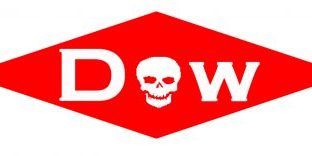What Happened
On the night of December 2nd, 1984, a Union Carbide pesticides plant in Bhopal, India, began leaking 27 tonnes of deadly methyl isocyanate gas into the air. Local residents awoke in terror, eyes burning, lungs choked, searching in desperation for their loved ones as they attempted to flee the clouds of toxic vapour.
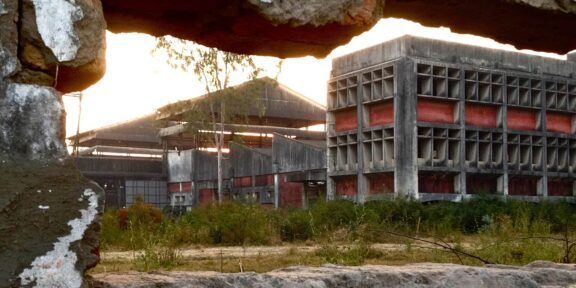
What Happened
On the night of December 2nd, 1984, a Union Carbide pesticides plant in Bhopal, India, began leaking 27 tonnes of deadly methyl isocyanate gas into the air. Local residents awoke in terror, eyes burning, lungs choked, searching in desperation for their loved ones as they attempted to flee the clouds of toxic vapour..
On the night of December 2nd, 1984, a Union Carbide plant in Bhopal, India, began leaking 27 tonnes of the deadly gas methyl isocyanate.
None of the six safety systems designed to contain such a leak were operational, allowing the gas to spread throughout the city of Bhopal [1]. Half a million people were exposed to the gas and 25,000 have died to date as a result of their exposure. More than 120,000 people still suffer from ailments caused by the accident and the subsequent pollution at the plant site.
These ailments include blindness, extreme difficulty in breathing and gynaecological disorders.
The site has never been properly cleaned up and it continues to poison the residents of Bhopal.
In 1999, local groundwater and well-water testing near the site of the accident revealed mercury at levels between 20,000 and 6 million times those expected. Cancer, brain-damage and birth-defect-causing chemicals were found in the water; trichloroethene, a chemical that has been shown to impair foetal development, was found at levels 50 times higher than EPA safety limits [2].
Testing published in a 2002 report revealed poisons such as 1,3,5 trichlorobenzene, dichloromethane, chloroform, lead and mercury in the breast milk of nursing women [3]. In 2001, Michigan-based chemical corporation Dow Chemical purchased Union Carbide, thereby acquiring its assets and liabilities.
However Dow Chemical has steadfastly refused to clean up the site, provide safe drinking water, compensate the victims or disclose the composition of the gas leak, information that doctors could use to properly treat the victims.
[1] Five Past Midnight in Bhopal. Dominique Lapierre & Javier Moro. (Warner Books, 2002).
[2] Factsheet: A New Generation of Monstrous Births.
[3] Toxic Present Toxic Future. A report published in January 2002 by the Fact-Finding Mission on Bhopal (FFMB).
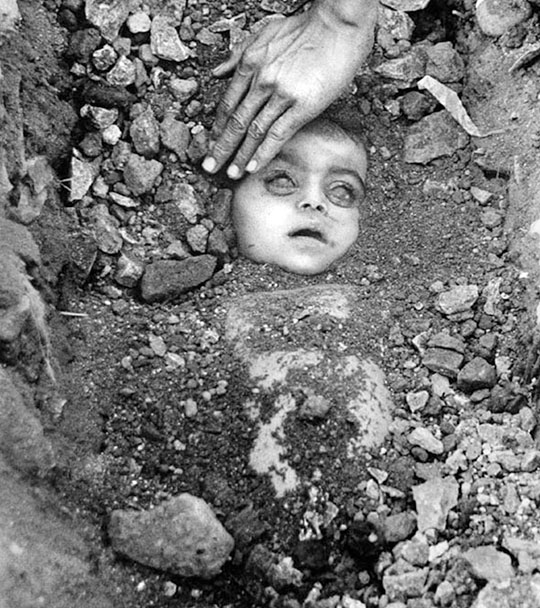
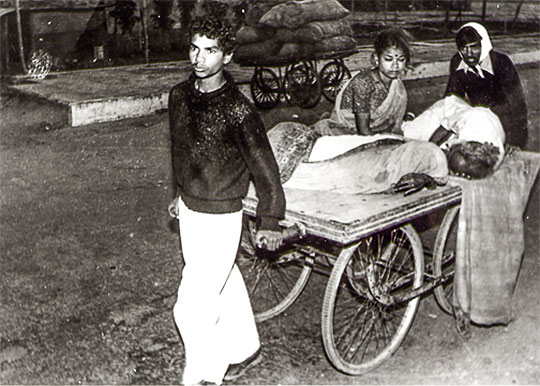
No one will ever know exactly how many thousands died that night.
Carbide says 3,800. Municipal workers who picked up bodies with their own hands, loading them onto trucks for burial in mass graves or to be burned on mass pyres, describe moving at least 15,000 bodies. Survivors, basing their estimates on the number of shrouds sold in the city, conservatively claim about 8000 died in the first week.
Such body counts become meaningless when you know that the dying has never stopped.
The Union Carbide factory in Bhopal was doomed almost from the start.
The company built the pesticide factory there in the 1970s, thinking that India represented a huge untapped market for its pest control products. However sales never met the company’s expectations; Indian farmers, struggling to cope with droughts and floods, didn’t have the money to buy Union Carbide’s pesticides. The plant, which never reached its full capacity, proved to be a losing venture and ceased active production in the early 1980s.
However, vast quantities of dangerous chemicals remained; three tanks continued to hold over 60 tons of methyl isocyanate, or MIC for short. Although MIC is a particularly reactive and deadly gas, the Union Carbide plant’s elaborate safety system was allowed to fall into disrepair. The management’s reasoning seemed to be that since the plant had ceased all production, no threat remained. Every safety system that had been installed to prevent a leak of MIC – at least six in all – ultimately proved inoperative (see Figure 1).
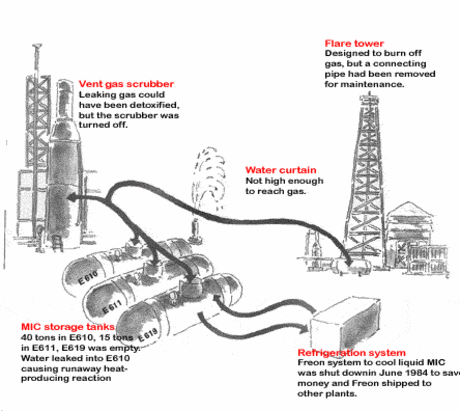
Regular maintenance had fallen into such disrepair that on the night of December 2nd, when an employee was flushing a corroded pipe, multiple stopcocks failed and allowed water to flow freely into the largest tank of MIC.
Exposure to this water soon led to an uncontrolled reaction; the tank was blown out of its concrete sarcophagus and spewed a deadly cloud of MIC, hydrogen cyanide, mono methylamine and other chemicals that hugged the ground. Blown by the prevailing winds, this cloud settled over much of Bhopal. Soon after, people began to die.
Remembers Aziza Sultan, a survivor: “At about 12.30am I woke to the sound of my baby coughing badly. In the half light I saw that the room was filled with a white cloud. I heard a lot of people shouting. They were shouting ‘run, run’. Then I started coughing, with each breath seeming as if I was breathing in fire. My eyes were burning.”
Another survivor, Champa Devi Shukla, remembers that, “It felt like somebody had filled our bodies up with red chillies, our eyes had tears coming out, noses were watering, we had froth in our mouths. The coughing was so bad that people were writhing in pain. Some people just got up and ran in whatever they were wearing or even if they were wearing nothing at all. Somebody was running this way and somebody was running that way, some people were just running in their underclothes. People were only concerned as to how they would save their lives so they just ran.
Those who fell were not picked up by anybody, they just kept falling, and were trampled on by other people. People climbed and scrambled over each other to save their lives – even cows were running and trying to save their lives and crushing people as they ran.
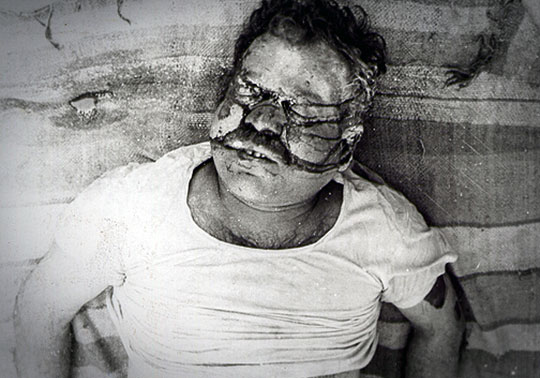
In those apocalyptic moments no one knew what was happening.
People simply started dying in the most hideous ways. Some vomited uncontrollably, went into convulsions and fell dead. Others choked to death, drowning in their own body fluids. Many died in the stampedes through narrow gullies where street lamps burned a dim brown through clouds of gas. The force of the human torrent wrenched children’s hands from their parents’ grasp. Families were whirled apart.
The poison cloud was so dense and searing that people were reduced to near blindness. As they gasped for breath its effects grew ever more suffocating. The gases burned the tissues of their eyes and lungs and attacked their nervous systems. People lost control of their bodies. Urine and faeces ran down their legs. Women lost their unborn children as they ran, their wombs spontaneously opening in bloody abortion.
According to Rashida Bi, a survivor who has lost five gas-exposed family members to cancers, those who escaped with their lives “are the unlucky ones; the lucky ones are those who died on that night.”
In the 36 years since the disaster, survivors have been plagued with an epidemic of cancers, menstrual disorders and what one doctor described as ‘monstrous births.’
Medical Issues
The gas-affected people of Bhopal continue to succumb to injuries sustained during the disaster, dying at the rate of one each day (2010).
Treatment protocols are hampered by the company’s continuing refusal to share information it holds on the toxic effects of MIC. Both Union Carbide and its owner Dow Chemical claim the data is a ‘trade secret,’ frustrating the efforts of doctors to treat gas-affected victims. The site itself has never been cleaned up, and a new generation is being poisoned by the chemicals that Union Carbide left behind.
In December 1999, Greenpeace reported that soil and water in and around the plant were contaminated by organochlorines and heavy metals. A February 2002 study found mercury, lead and organochlorines in the breastmilk of women living near the plant. The children of gas-affected women are subject to a frightening array of debilitating illnesses, including retardation, gruesome birth defects and reproductive disorders.
Legal Issues
It wasn’t until 1989 that Union Carbide, in a partial settlement with the Indian government, agreed to pay out some $470 million in compensation.
The victims weren’t consulted in the settlement discussions, and many felt cheated by their compensation – $300-$500 – or about five years’ worth of medical expenses. Today, those who were awarded compensation are hardly better off than those who weren’t.
Victims of the gas attack eke out a perilous existence; 50,000 Bhopalis can’t work due to their injuries and some can’t even muster the strength to move. The lucky survivors have relatives to look after them; many survivors have no family left. Everyone has perished.
In 1991, the local government in Bhopal charged Warren Anderson, Union Carbide’s CEO at the time of the disaster, with ‘culpable homicide not amounting to murder’- an equivalent charge to manslaughter. If he had been tried in India, and convicted, he would have faced up to a maximum of ten years in prison.
However, Mr. Anderson never did stand trial. An Indian extradition request had lain mouldering for three and a half years without a word of response from American officials when, in September of 2014, Mr. Anderson died, a few months before the disaster’s 30th anniversary, having lived a long, comfortable retirement of luxury in the Hamptons.
Union Carbide Corporation itself was also charged with culpable homicide, a criminal indictment whose penalty has no upper limit. These charges have never been resolved, as Union Carbide, like its former CEO, has refused to appear and face trial in India.
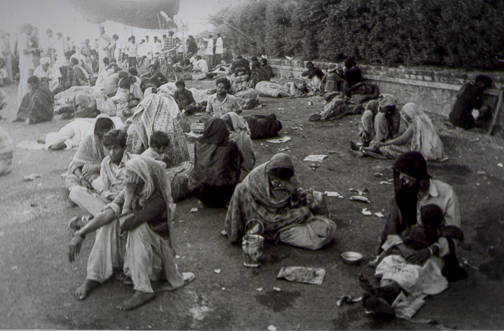
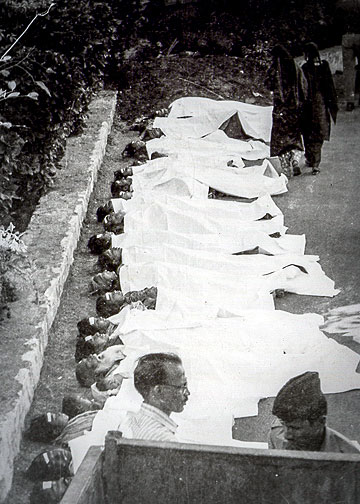
Dow Chemical (Dow) and Union Carbide completed a merger in 2001.
The agreement submitted to regulators omitted any mention of pending criminal cases against Union Carbide. Article V of the Merger Agreement 214 with the Schedule 13D stated: “there are no civil, criminal or administrative actions, suits, claims, hearings, investigations or proceedings pending or, to the actual knowledge of its executive officers, threatened against it or any of its Subsidiaries… except for those that are not, individually or in the aggregate, reasonably likely to have a Material Adverse Effect on it.”
Since Dow Chemical exercises total control over Union Carbide it has been served notice to appear in court in Bhopal in order to explain Carbide’s continued absence. Though it has been issued notices on six separate occasions Dow, like its wholly-owned subsidiary Union Carbide, has thus far failed to attend court.
Union Carbide also remains liable for the environmental devastation its operations have caused. Environmental damages were not addressed in the 1989 settlement, and the contamination that Union Carbide left behind continues to spread. These liabilities became the property of Dow, following its 2001 purchase of Union Carbide. The deal was completed much to the chagrin of some Dow stockholders, who filed suit in a desperate attempt to stop it.
These stockholders were aware that a corporation assumes both the assets and the liabilities of any company it purchases, according to established corporate law. Indeed, Dow was quick to pay off an outstanding claim against Union Carbide soon after it acquired the company, setting aside $2.2 billion to compensate former Union Carbide asbestos workers in Texas. Though swift to accept historical liabilities inherited from Union Carbide in North America, Dow stringently maintains that it isn’t liable for Union Carbide’s historical actions in Bhopal.
Thus the victims in Bhopal have been left in the lurch, told to fend for themselves as corporate executives elude justice and big corporations elude the blame. Dow’s unwillingness to fulfill its legal and moral obligations in Bhopal represents only the latest chapter in this horrifying humanitarian disaster. For over 30 years, the victims of Bhopal have continued to demand justice; the only question is: will we listen?
Further Reading
The Dow Chemical Company’s Bhopal-Related Legal Liabilities
The Dow Chemical Company (Dow) claims that all legal matters concerning the Bhopal disaster are closed. This is simply not true. Dow is a named respondent and/ or summoned to appear in a number of ongoing cases arising from Union Carbide’s business in Bhopal.
BP, BhoPal, and the United States Department of Justice.
Compare the legal aftermath of the Bhopal Disaster with the 2010 BP Deepwatwer Horizon Disaster
Dow’s Ownership of Union Carbide- A Flawed Legal Defence Exposed
The Dow Chemical Company continues to maintain that it is not responsible for the acts of its wholly owned subsidiary the Union Carbide Corporation.
Dow Chemical Company- Illegal Activities, Fines and Civil Penalties
Other contamination issues and illegal activities of Dow Chemical along with fines and civil penalties

